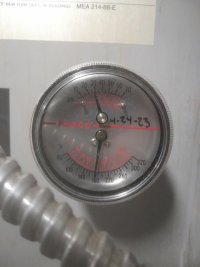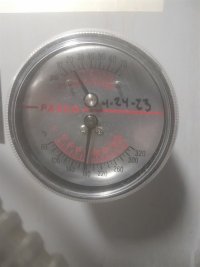jeff.bowman
New Member
I'm house-sitting for a friend who's away for extended time, but we're in frequent contact. We're trying to determine whether or not his slab-heat residential boiler system has a leak (approx. 1,800 square ft).
He recently had the zones drained (they were nearly or completely pure water) and refilled with a glycol mix. This was the first time doing this after twenty years of successful service. We're not sure, but presumably the system was stocked with glycol at the outset.
When considering the question of "Where did the original glycol go?," we're entertaining conflicting theories (not between he and I; between theories).
1. There's a leak, and the water was introduced via the makeup valve.
2. There's no leak, and the water was introduced via various maintenance projects over the years, where the system was partially drained each time.
(Note that he doesn't have a glycol makeup tank installed—the present configuration allows clear water to flow in.)
To attempt to isolate all of this, we've closed the line valves before and after the makeup valve and undertaken a twice-daily monitoring effort. We started in mid-November of last year.
We've noticed a ten-pound drop from thirty to twenty since that time, but we don't know whether this is expected/normal. In the case of a leak, one might suppose that the pressure would drop faster than this—even with the tiniest of pinholes.
Amid all of this is the question: "If we don't anticipate pressure loss, why the concept of a makeup valve in the first place?"
Do we have a leak?
He recently had the zones drained (they were nearly or completely pure water) and refilled with a glycol mix. This was the first time doing this after twenty years of successful service. We're not sure, but presumably the system was stocked with glycol at the outset.
When considering the question of "Where did the original glycol go?," we're entertaining conflicting theories (not between he and I; between theories).
1. There's a leak, and the water was introduced via the makeup valve.
2. There's no leak, and the water was introduced via various maintenance projects over the years, where the system was partially drained each time.
(Note that he doesn't have a glycol makeup tank installed—the present configuration allows clear water to flow in.)
To attempt to isolate all of this, we've closed the line valves before and after the makeup valve and undertaken a twice-daily monitoring effort. We started in mid-November of last year.
We've noticed a ten-pound drop from thirty to twenty since that time, but we don't know whether this is expected/normal. In the case of a leak, one might suppose that the pressure would drop faster than this—even with the tiniest of pinholes.
Amid all of this is the question: "If we don't anticipate pressure loss, why the concept of a makeup valve in the first place?"
Do we have a leak?


